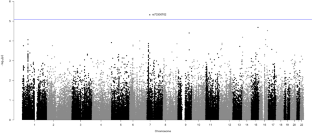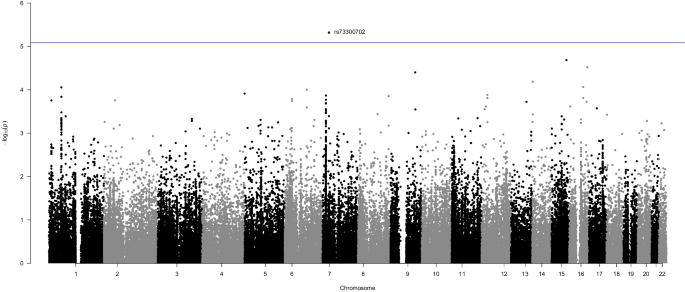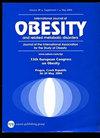Novel genomic variants related to visceral adiposity index (VAI) and body adiposity index (BAI) in Indian sib-pairs
IF 4.2
2区 医学
Q1 ENDOCRINOLOGY & METABOLISM
引用次数: 0
Abstract
Obesity is among the leading public health threats globally. Over the last few years, visceral adiposity index (VAI), and body adiposity index (BAI), derived from anthropometric, and biochemical measures, have gained importance as a measure of obesity. However, unlike other common indices like body mass index, and waist circumference, the genetic predisposition of VAI, and BAI under-examined. 2265 sib-pairs from Indian Migration Study were used for examining the association of genetic variants from the Cardio-Metabochip array with VAI, and BAI. Mixed linear regression models were run, and all inferences were based on the within-sib component of the Fulker’s association models. Gene-environment/lifestyle interaction analyses were also undertaken. rs6659428 at LOC400796 | SEC16B (β = 0.26, SE = 0.05), and rs7611535 at DRD3 | LOC645180 (β = 0.18, SE = 0.04) were associated with VAI at suggestive significance value of <8.21 × 10−6. For BAI, rs73300702 at JAZF1-AS1 (β = 0.27, SE = 0.06), was the top hit at p value < 8.21 × 10−6. Further, rs6659428 showed marginal effect modification with rural/urban location (β = 0.26, SE = 0.13, p value = 0.047), and rs73300702 with physical activity (β = −0.29,SE = 0.14, p value = 0.034). We report three novel genetic loci for VAI, and BAI in Indians that are important indicators of adiposity. These findings need to be replicated and validated with larger samples from different ethnicities. Further, functional studies for understanding the biological mechanisms of these adiposity indices need to be undertaken to understand the underlying pathophysiology.


印度兄弟姐妹中与内脏脂肪指数(VAI)和体脂肪指数(BAI)相关的新基因组变异。
背景:肥胖症是全球主要的公共健康威胁之一。在过去几年中,根据人体测量和生化指标得出的内脏脂肪指数(VAI)和体脂肪指数(BAI)作为肥胖的衡量指标,其重要性日益凸显。然而,与身体质量指数和腰围等其他常见指数不同的是,VAI 和 BAI 的遗传易感性研究不足。研究人员运行了混合线性回归模型,所有推论均基于富尔克关联模型的同胞兄弟姐妹内部分。结果显示:LOC400796 | SEC16B 的 rs6659428(β = 0.26,SE = 0.05)和 DRD3 | LOC645180 的 rs7611535(β = 0.在 BAI 方面,JAZF1-AS1 的 rs73300702(β = 0.27,SE = 0.06)与 VAI 相关,提示显著性值为-6。此外,rs6659428 与农村/城市位置(β = 0.26,SE = 0.13,p 值 = 0.047)和 rs73300702 与体力活动(β = -0.29,SE = 0.14,p 值 = 0.034)之间的效应修饰微弱:我们报告了印度人 VAI 和 BAI 的三个新的遗传位点,它们是肥胖的重要指标。这些发现需要在不同种族的更大样本中进行重复和验证。此外,还需要开展功能研究以了解这些脂肪指数的生物学机制,从而了解其潜在的病理生理学。
本文章由计算机程序翻译,如有差异,请以英文原文为准。
求助全文
约1分钟内获得全文
求助全文
来源期刊

International Journal of Obesity
医学-内分泌学与代谢
CiteScore
10.00
自引率
2.00%
发文量
221
审稿时长
3 months
期刊介绍:
The International Journal of Obesity is a multi-disciplinary forum for research describing basic, clinical and applied studies in biochemistry, physiology, genetics and nutrition, molecular, metabolic, psychological and epidemiological aspects of obesity and related disorders.
We publish a range of content types including original research articles, technical reports, reviews, correspondence and brief communications that elaborate on significant advances in the field and cover topical issues.
 求助内容:
求助内容: 应助结果提醒方式:
应助结果提醒方式:


